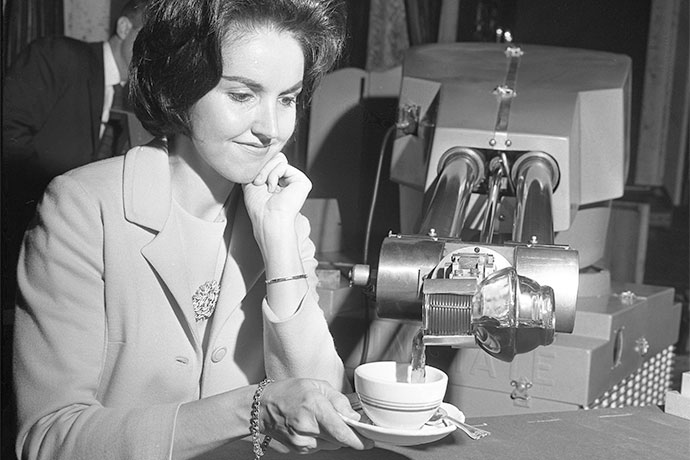Have you ever wondered what the first robot was like? Given the surprising amount of history about robots and the many different ways to define the concept, it can be hard to decide which one came first. However, if we’re going by the definition that a robot is something you can program to do a task by itself, then there’s an easy answer and it is called the Unimate.
Invented back in 1961, the Unimate was simply an arm that could pick up and move things around by itself. Sounds boring, right? Remember, though, this is the first robot that you could program to move on its own. Before Unimate, this kind of invention was the stuff of science fiction. In fact, when the inventor George Devol met up with a man named Joseph Engelberger in 1956, that’s exactly what they bonded over.
At the time, robots were mostly confined to the fictional stories of authors like Isaac Asimov whose automatons could do jobs for humans. For people in the 1950s, that stuff was as fantastical as Star Wars is to us. But as Devol and Engelberger got talking about Asimov’s work, Devol revealed that he was actually planning to make science fiction come to life with the Unimate. The two were invested in the idea, and after the party, they created a company called Unimation – from ‘universal’ and ‘automation’ combined.
Unimate was programmable, but not by using a coding language like we do today. Instead, you had to physically move the arm to where you wanted it to go, then tell the Unimate to remember the location. This process was repeated for each step of the task to be performed. When switched on, the Unimate would copy the movements it was given and repeat them.
Once the arm had been invented, Devol and Engelberger had to find people who wanted to buy it. In Isaac Asimov’s stories, the robots lived by a series of laws, including “First, do no harm.” As such, the pair had the idea that the robot should do jobs that were very dangerous for humans to do.
They found success with General Motors in 1961, which wanted the Unimate on their production line to remove metal from a die-casting machine. Die Casting is when you force molten metal into a mold to make a shape; a task that could potentially be harmful to humans.
But that’s not to say they didn’t also have some fun with their invention. In 1966, they brought Unimate on the Tonight Show, then hosted by Johnny Carson. People were glued to their TVs as this science fiction-like arm knocked a golf ball into a cup, swung a baton to conduct a band, and poured out a beer. For people in 1966, it must have felt like watching science fiction come to life.
From there, the concept of a programmable robot evolved, including a programming language called VAL so you didn’t have to move the arm around yourself. So the next time you see a robot moving by itself, just remember that it all began with a little arm that could.

